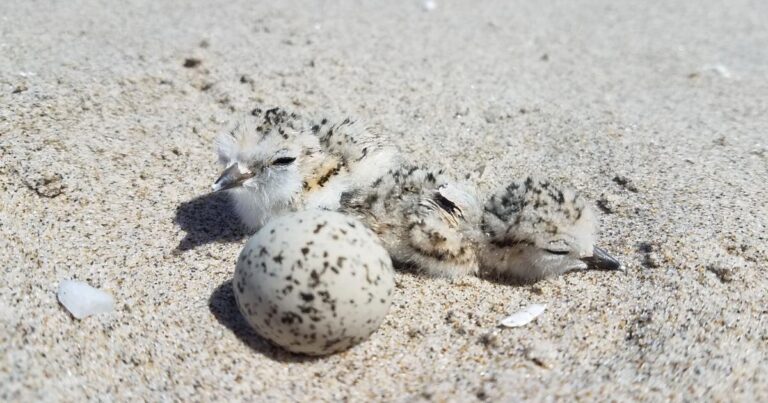The Oregon Department of Parks and Recreation is reminding the public along the Oregon coast that it is nesting season for plovers.
The nesting period is from March 15th to September 15th.
The full release from the Oregon Department of Parks and Recreation can be read below.
oregon coast, or – The Oregon Department of Parks and Recreation and Siuslaw National Forest remind visitors that it is plover nesting season on the Oregon Coast from March 15 to September 15 – Visitors must By adhering to recreational restrictions in the Plover region, you can support recovery efforts for the endangered Western Plover.
Sensitive plover nesting areas are roped off or identified with signs stating rules and restrictions. such as being on wet sand, to protect small shorebirds and their exposed nests during this critical period. Recreation restrictions are in place in designated plover management areas, i.e., coastal areas along shorelines where plovers nest or may nest. Together, these areas make up approximately 60 miles of Oregon's 562 miles of coastline.
Seasonal recreation restrictions help protect these small birds, which nest on open sand. The nest, especially the chicks, are well camouflaged. During the nesting season, adult birds trying to protect their young may be chased away from the nest by human disturbance. If eggs and chicks are left alone too long, they can die from predators or humans.
Notice of recreation at the designated plover coast (March 15th to September) 15:
- The following are not allowed: dogs (even on a leash), driving a car, riding a bicycle, camping, burning wood, flying a kite, or operating a drone.
- Foot and horse traffic is permitted below the high tide line and in wet sand packed areas.
- Please respect signs and fences that protect nesting areas.
“We're making great strides in reversing the decline of this species,” said Cindy Burns, a wildlife biologist with the Siuslaw National Forest. “But it will take all of us, so we urge people to understand the rules of nesting season and do their part to share our beaches this spring and summer. ”
The U.S. Fish and Wildlife Service listed the Western Plover as an endangered species in 1993, when officials counted only 45 breeding adults. Since then, with continued efforts, the number of breeding adults has steadily increased. Officials counted 433 individuals during the 2023 breeding season survey.
“We appreciate the support of our visitors to help keep shorebirds safe in our total 40 miles of protected area along the coast. “We encourage you to enjoy unrestricted recreational recreation on hundreds of miles of beaches that are not designated as nesting areas,” said Laurel Hillman, coastal specialist with the Oregon Department of Parks and Recreation.
More information about snowy plovers, including detailed maps of nesting sites, can be found on the Oregon State Parks website (oregon.gov/plovers) and the Siuslaw National Forest website (https://t.ly/AKPAN) . Visitors to the Oregon Dunes National Recreation Area can check the Off-Highway Vehicle (OHV) map on its website for information about restricted recreation areas and driving on sandy beaches.
New plover activity
As the number of plovers increases, nesting may occur on new or previous nesting sites. For example, visitors to Sand Lake Recreation Area may see a small area roped off near the lake's inlet to protect active nests, or may encounter plovers on the beach. Beachgoers are encouraged to protect these birds by limiting recreational activities to wet beaches, avoiding roped-off nesting areas, taking all trash home with them and keeping dogs on leads.
Plover conservation background
Multiple land managers oversee beach activities for plover protection, primarily the U.S. Forest Service (USFS), Bureau of Land Management (BLM), and Oregon Parks and Recreation Department (OPRD).
Habitat loss from invasive plants and human disturbances such as garbage and discarded food that attract predators are contributing to bird declines. The Oregon Dunes Restoration Collaborative, saveoregondunes.org, works with land managers to develop restoration strategies and address the need to restore the dune ecosystem for western plovers, rare flora and fauna, and the unique recreational opportunities offered here. raising public awareness about


